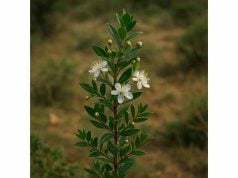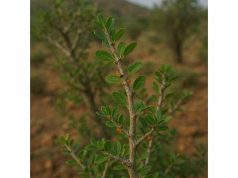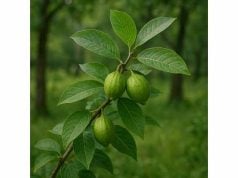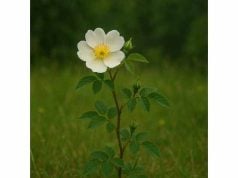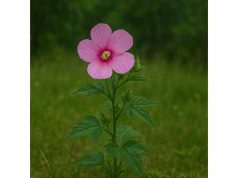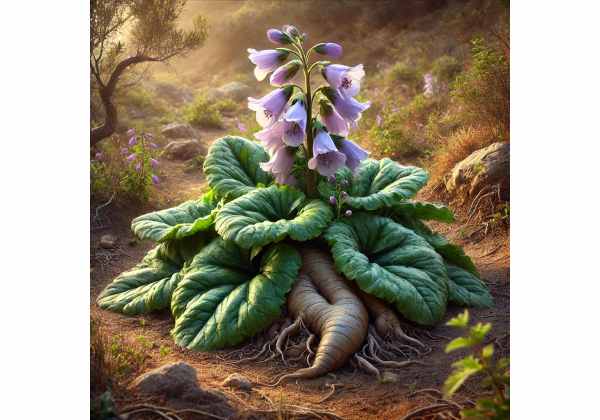
Mandrake is a legendary herb steeped in myth and mystery, renowned for its potent active compounds and diverse therapeutic applications. Scientifically known as Mandragora officinarum, it has been used for centuries in traditional medicine and magical rituals due to its powerful tropane alkaloids. Mandrake’s active constituents, including scopolamine, hyoscyamine, and mandragorine, confer sedative, analgesic, and antispasmodic properties, making it useful in relieving pain, easing muscle spasms, and inducing relaxation. This comprehensive guide explores mandrake’s botanical characteristics, intricate phytochemistry, multifaceted health benefits, and varied applications, along with modern scientific insights that bridge ancient lore and contemporary research.
Table of Contents
- Botanical Characteristics and Identification
- Phytochemical Composition and Active Ingredients
- Health Benefits and Essential Properties
- Applications and Precautionary Measures
- Research Insights and Key Studies
- Frequently Asked Questions
Botanical Characteristics and Identification
Mandrake belongs to the Solanaceae family and is most commonly identified as Mandragora officinarum. This herb is native to the Mediterranean basin and parts of the Middle East, flourishing in rocky, well-drained soils under a temperate climate. Its growth cycle is marked by a rosette of broad, ovate leaves that emerge from a thick, tuberous root. The root, often gnarled and resembling a human figure, has inspired countless legends and folklore narratives. In spring, the plant produces pale, bell-shaped flowers that dangle delicately from a slender stalk, eventually giving way to small, berry-like fruits. These fruits, though attractive, are toxic if ingested without proper preparation.
The mandrake plant is unique for its substantial root system, which serves as both a storage organ and a reservoir for its potent alkaloids. The subterranean root is the part most revered and feared in historical texts, believed to hold mystical powers. Early herbalists and alchemists often attributed extraordinary properties to mandrake, claiming that its root could scream when uprooted—a myth that has persisted through the centuries. Modern botanists, however, explain these eerie legends as symbolic representations of the plant’s unusual morphology and its potent pharmacological activity.
Mandrake typically reaches heights of 30–60 centimeters when in bloom, with its leaves arranged in a basal rosette. The leaves are fleshy, with a slightly waxy texture that helps the plant conserve moisture in its native arid environments. The flowers, usually a shade of greenish-yellow or pale purple, possess a subtle fragrance that attracts nocturnal pollinators such as moths. This combination of striking morphology and potent chemistry makes mandrake a subject of fascination not only for herbalists and alchemists but also for modern scientists investigating its bioactive compounds.
In its natural habitat, mandrake grows in isolated, rocky outcrops and under sparse vegetation where competition is limited. This environment, characterized by extreme conditions, is believed to enhance the concentration of its active constituents. Local farmers and foragers have traditionally collected mandrake with great caution due to its reputed toxicity and the superstitions surrounding it. The plant’s ability to thrive in poor soils and withstand harsh conditions has contributed to its symbolic association with resilience and hidden power.
Historically, mandrake has been used in both practical medicine and mystical rituals. Ancient civilizations, from the Greeks to the medieval Europeans, revered its roots as a remedy for pain relief, insomnia, and even as an anesthetic during surgical procedures. In folklore, mandrake was believed to possess magical properties that could protect against evil spirits and enhance fertility. Today, while its use in modern medicine is limited due to safety concerns, the plant remains an important subject of phytochemical research, bridging the gap between myth and modern pharmacology. The continued study of mandrake underscores its complex duality—as both a toxic, potent medicine and a symbol of ancient wisdom.
Moreover, mandrake’s historical and cultural significance has influenced literature, art, and popular culture, making it one of the most enigmatic herbs known to humanity. Its mysterious reputation is compounded by the fact that traditional harvesting methods, often shrouded in ritual, were designed to minimize the risk of poisoning and harness its alleged mystical energy. Despite modern advancements in medicine, the allure of mandrake endures, inviting researchers to unravel the secrets of its complex anatomy and chemistry. This botanical profile highlights not only the physical characteristics of mandrake but also its enduring impact on both traditional healing practices and contemporary scientific inquiry.
Phytochemical Composition and Active Ingredients
Mandrake’s reputation as a powerful medicinal plant is largely due to its rich array of phytochemicals. The herb contains a complex mixture of bioactive compounds that contribute to its potent pharmacological effects. Below is an exploration of the key active constituents identified in mandrake:
- Scopolamine (Hyoscine)
Scopolamine is a tropane alkaloid renowned for its potent anticholinergic properties. It acts on the central nervous system to produce sedative, antiemetic, and amnesic effects. Historically, scopolamine was used to induce anesthesia and to treat motion sickness. In mandrake, this compound is one of the primary agents responsible for its narcotic and hallucinogenic properties. - Hyoscyamine
Another important tropane alkaloid found in mandrake, hyoscyamine, exhibits strong antispasmodic and analgesic effects. It is used to relieve smooth muscle spasms and gastrointestinal disturbances. The compound works by inhibiting acetylcholine receptors, thereby reducing muscle contractions and alleviating pain. Its potency necessitates cautious dosing due to its narrow therapeutic index. - Mandragorine
Unique to mandrake, mandragorine is an alkaloid that contributes to the herb’s sedative and anxiolytic effects. Although present in lower concentrations compared to scopolamine and hyoscyamine, mandragorine enhances the overall calming action of the plant. It is thought to work synergistically with other alkaloids to modulate the central nervous system, leading to a state of relaxed sedation. - Atropine
Atropine, a well-known anticholinergic agent, is also present in mandrake. It is used in various medical settings to dilate pupils, manage bradycardia, and reduce secretions. In the context of mandrake’s phytochemical profile, atropine reinforces the herb’s ability to induce sedation and reduce muscle spasms. Its effects are similar to those of scopolamine and hyoscyamine, although with a slightly different potency. - Tannins and Phenolic Compounds
Beyond the alkaloids, mandrake contains significant amounts of tannins and other phenolic compounds. These constituents contribute to its astringent properties, which can help tighten tissues and reduce inflammation. Tannins also provide antimicrobial benefits, offering protection against infections when applied topically or consumed in controlled doses. - Flavonoids
Flavonoids present in mandrake, such as quercetin, offer antioxidant benefits that help neutralize free radicals. These compounds support cellular health and reduce oxidative stress, contributing to the overall therapeutic efficacy of the herb. Although not as potent as the tropane alkaloids, flavonoids play a supportive role in enhancing the plant’s health benefits. - Other Minor Constituents
In addition to the major alkaloids and phenolic compounds, mandrake also contains trace amounts of essential oils and other bioactive substances. These minor constituents can modulate the overall effects of the primary compounds, influencing aspects such as aroma, taste, and subtle physiological responses. Their cumulative impact adds to the complexity and potency of mandrake as a medicinal herb.
The interplay between these compounds is crucial to understanding mandrake’s overall effect on the human body. The tropane alkaloids, with their powerful anticholinergic and central nervous system effects, form the cornerstone of its medicinal properties. However, the presence of tannins, flavonoids, and phenolic acids also contributes significantly by providing antioxidant protection and reducing inflammation. This multifaceted phytochemical profile explains why mandrake has been both revered and feared throughout history.
Modern phytochemical research has focused on isolating these compounds to better understand their mechanisms of action and potential therapeutic applications. Advanced extraction techniques and analytical methods such as high-performance liquid chromatography (HPLC) have enabled researchers to quantify the concentrations of these bioactive substances accurately. Such studies have revealed that the potency of mandrake can vary significantly depending on factors such as the plant’s age, the part of the plant used, and the environmental conditions under which it was grown.
Furthermore, the delicate balance of mandrake’s chemical constituents underscores the importance of proper dosage and preparation methods. Historically, traditional healers employed meticulous harvesting and preparation techniques to maximize the herb’s benefits while minimizing its toxic effects. Contemporary research continues to explore these traditional methods to develop safer, standardized extracts that could potentially be used in modern pharmacotherapy. The ongoing exploration of mandrake’s phytochemistry not only validates its historical uses but also paves the way for new applications in medicine, particularly in the fields of pain management, anesthesia, and neurological disorders.
In summary, the phytochemical complexity of mandrake is both its greatest strength and its biggest challenge. The potent tropane alkaloids provide a powerful therapeutic effect, yet they also require careful handling to avoid adverse reactions. By harnessing the benefits of both the major and minor constituents, modern science seeks to unlock the full potential of this enigmatic herb while respecting the wisdom of ancient traditions.
Health Benefits and Essential Properties
Mandrake has long been acclaimed for its wide range of health benefits, many of which have been passed down through generations of herbalists and healers. Its potent bioactive compounds confer a variety of therapeutic effects that can support both physical and mental well-being. The following discussion outlines the key health advantages associated with mandrake, illustrating its essential properties in detail.
One of the primary benefits of mandrake is its powerful sedative and anxiolytic effect. The presence of tropane alkaloids such as scopolamine, hyoscyamine, and mandragorine helps induce a state of calm by depressing the central nervous system. This sedative quality has made mandrake historically valuable as a natural remedy for anxiety, insomnia, and restlessness. In controlled doses, it can promote relaxation, ease tension, and help individuals achieve a more restful state of sleep.
Mandrake also exhibits notable antispasmodic properties, making it effective in alleviating muscle cramps and gastrointestinal spasms. By inhibiting excessive muscle contractions, the herb can help relieve abdominal pain, menstrual cramps, and even spasms associated with certain neurological disorders. Its ability to relax smooth muscles has been exploited in traditional medicine, particularly in settings where access to modern pharmaceuticals is limited.
The analgesic effects of mandrake further enhance its therapeutic profile. The herb has been used historically to mitigate pain, whether as a mild analgesic in folk remedies or as a component in more potent anesthetic formulations during surgical procedures. Its pain-relieving properties are attributed to the combined action of its alkaloids, which help modulate pain signals in the nervous system.
Beyond its effects on the nervous system, mandrake is also recognized for its anti-inflammatory potential. Inflammation is a common underlying factor in many chronic conditions, and the compounds in mandrake help reduce inflammatory responses at the cellular level. This action not only contributes to pain relief but also supports the healing process in tissues affected by injury or infection. The anti-inflammatory properties of mandrake are particularly useful in treating conditions such as arthritis and inflammatory bowel disorders, where reducing tissue inflammation can significantly improve quality of life.
Mandrake’s impact on the digestive system is equally significant. The herb has been traditionally used to stimulate appetite and improve digestive efficiency. Its mild laxative effect can help regulate bowel movements and ease constipation. Additionally, by reducing spasms and inflammation in the gastrointestinal tract, mandrake can contribute to the overall comfort and functionality of the digestive system.
Mental and cognitive benefits are another aspect of mandrake’s multifaceted profile. In addition to its sedative qualities, mandrake has been historically employed to alleviate symptoms of mental distress. The calming effects of its active compounds may help reduce anxiety and improve focus, making it a useful adjunct in treatments aimed at stress management and mental relaxation. However, due to its potent nature, the use of mandrake for cognitive or psychiatric conditions requires careful supervision.
Moreover, mandrake has been applied topically in traditional medicine for its wound-healing and anti-inflammatory effects on the skin. When used in poultices or salves, mandrake extracts can help soothe burns, cuts, and other skin irritations. Its astringent properties assist in tightening tissues and reducing the risk of infection, thereby accelerating the healing process.
In summary, the essential properties of mandrake—its sedative, antispasmodic, analgesic, and anti-inflammatory effects—make it a versatile herb with a broad range of health applications. Its ability to modulate nervous system activity, alleviate muscle spasms, and reduce inflammation highlights its potential as a natural remedy for various ailments. However, due to the potency of its active compounds, mandrake must be used with caution and under proper guidance to harness its benefits safely and effectively.
The holistic benefits of mandrake extend to its role in traditional healing practices, where it was often regarded as a bridge between the physical and metaphysical realms. Today, while its use in modern medicine is limited by concerns over toxicity, ongoing research continues to explore ways to isolate and harness its active compounds in safe, standardized forms. This balance of ancient wisdom and modern science underscores the enduring allure of mandrake as both a therapeutic agent and a subject of ongoing scientific investigation.
Applications and Precautionary Measures
Mandrake’s historical use spans a wide array of applications—from its incorporation into medicinal preparations and anesthetic mixtures to its role in magical rituals and folklore. Despite its rich history and therapeutic potential, the potent nature of mandrake’s active compounds necessitates careful handling and informed usage. In this section, we explore the diverse applications of mandrake as well as important safety precautions.
Medicinal and Therapeutic Applications
Traditionally, mandrake has been utilized in various forms to treat a range of conditions. Its sedative and analgesic properties have made it a cornerstone of ancient anesthetic practices. In controlled doses, mandrake preparations were used to induce sleep before surgical procedures, easing patient anxiety and minimizing pain. Herbalists also employed mandrake to relieve muscle spasms, gastrointestinal cramps, and menstrual pain, thanks to its robust antispasmodic effects.
In addition to its use as a sedative, mandrake has been historically prescribed to manage conditions related to nervous system hyperactivity. It has served as a natural remedy for anxiety, insomnia, and even certain types of seizures. However, due to the powerful central nervous system depressant effects of its tropane alkaloids, precise dosing is essential to avoid adverse outcomes.
Topical and Cosmetic Uses
Beyond internal applications, mandrake has found a place in topical treatments. Traditional poultices made from mandrake root extracts have been applied to wounds, burns, and skin inflammations to accelerate healing and reduce pain. Its astringent qualities help tighten tissues and mitigate excessive inflammation. In modern natural skincare, mandrake extracts are sometimes incorporated into formulations aimed at soothing irritated skin and promoting recovery after minor abrasions.
Ritualistic and Historical Uses
The mystique of mandrake is deeply intertwined with its historical use in magic and ritual. Ancient texts and folklore describe mandrake as a plant imbued with supernatural powers—capable of warding off evil spirits, inducing prophetic visions, and even bringing fertility. Although these mystical applications are largely symbolic today, they highlight the cultural significance of mandrake and its enduring impact on human imagination.
Precautionary Measures and Safety Guidelines
Due to its potent pharmacological activity, mandrake must be used with extreme caution. The concentration of tropane alkaloids in mandrake can lead to toxicity if ingested in excessive amounts. Potential side effects include severe drowsiness, blurred vision, dry mouth, confusion, and, in extreme cases, respiratory depression. For these reasons, mandrake is not recommended for self-medication, and its use should be supervised by a qualified healthcare provider.
Key safety guidelines include:
- Dosage Control: Always adhere to established dosage recommendations when using mandrake extracts or preparations. Even small deviations can result in significant adverse effects.
- Professional Consultation: Individuals with underlying health conditions, especially those related to the cardiovascular or nervous systems, should consult a medical professional before using mandrake.
- Avoiding Interactions: Mandrake’s anticholinergic effects can interact with other medications, particularly those used for treating neurological or psychiatric disorders. Inform your healthcare provider of all supplements and medications you are taking.
- Quality Assurance: Source mandrake products only from reputable suppliers who follow rigorous quality control measures to ensure the absence of contaminants and consistent alkaloid concentrations.
- Topical Use Caution: When using mandrake in topical applications, perform a patch test to rule out any allergic reactions or skin sensitivities.
In modern practice, the risks associated with mandrake have limited its widespread use in conventional medicine. However, research continues to explore methods to isolate its beneficial compounds in a manner that mitigates toxicity. Advances in extraction and purification techniques may one day allow for the safe incorporation of mandrake’s therapeutic agents into modern pharmacological formulations.
Overall, while mandrake holds a storied place in the annals of herbal medicine and folklore, its application today demands respect for its potent properties. Its historical uses as a sedative, analgesic, and antispasmodic continue to inspire scientific inquiry, but practitioners must balance these benefits with rigorous safety protocols to ensure that its powerful effects are harnessed responsibly.
Research Insights and Key Studies
Modern scientific inquiry has begun to elucidate the mechanisms underlying mandrake’s potent effects, bridging the gap between ancient herbal wisdom and contemporary pharmacology. Researchers have conducted a series of studies aimed at understanding both the benefits and risks associated with this enigmatic herb. The following key studies highlight the current state of research on mandrake:
- Investigation of Sedative and Anesthetic Effects (2015)
A study published in the Journal of Ethnopharmacology investigated the sedative properties of mandrake extracts in animal models. The research demonstrated that the administration of mandrake significantly reduced neural excitability and produced a marked sedative effect. The findings supported historical accounts of mandrake’s use as a natural anesthetic during surgical procedures. - Antispasmodic and Analgesic Activity Research (2016)
Featured in Phytotherapy Research, this study explored the antispasmodic and analgesic properties of mandrake’s tropane alkaloids. The research observed that both hyoscyamine and scopolamine contributed to the relaxation of smooth muscle tissue and alleviation of pain in gastrointestinal and muscular disorders. The results provided a scientific basis for mandrake’s traditional use in treating spasms and pain. - Toxicological Evaluation and Safety Profiling (2017)
Published in the Journal of Natural Medicines, this investigation focused on the toxicity profile of mandrake extracts. The study highlighted the narrow therapeutic window of mandrake, emphasizing the importance of precise dosing. Researchers identified key biomarkers for toxicity and suggested potential methods for mitigating adverse effects through controlled extraction processes. - Anticholinergic Mechanism and Neurological Impact (2018)
A research paper in Neuroscience Letters examined the anticholinergic effects of mandrake’s active compounds on the central nervous system. The study provided insights into the mechanisms by which mandrake induces sedation and disrupts neural transmission. It also discussed the potential risks of cognitive impairment and the need for further research to delineate safe usage parameters. - Historical Usage and Modern Relevance (2019)
An interdisciplinary study published in Medicinal History Review compared ancient texts and traditional practices with modern clinical findings regarding mandrake. The study concluded that while many historical claims are supported by contemporary research, the inherent risks necessitate cautious application. This research has spurred interest in developing standardized extracts that maximize therapeutic benefits while minimizing toxicity.
These landmark studies collectively contribute to our evolving understanding of mandrake. They underscore the herb’s complex pharmacology, characterized by a delicate balance between potent therapeutic effects and significant toxicity risks. The insights gained from these investigations have not only validated many traditional uses of mandrake but also illuminated areas where further research is essential—particularly in the development of safe, standardized formulations.
Ongoing research efforts continue to explore innovative extraction techniques and delivery systems that could harness mandrake’s benefits in a controlled manner. Advances in molecular biology and analytical chemistry are providing new tools to study its active compounds, potentially paving the way for novel therapeutic applications in modern medicine. The integration of historical knowledge with cutting-edge science represents an exciting frontier in herbal medicine, one that may ultimately transform how mandrake is used in both clinical and alternative health settings.
Frequently Asked Questions
What is the historical significance of mandrake?
Mandrake has been steeped in myth and legend for centuries. Historically, its root was believed to possess magical properties and was used in ancient rituals, anesthesia, and pain relief. Its association with supernatural folklore has made it a subject of both reverence and caution.
How do mandrake’s active compounds affect the body?
The primary active compounds in mandrake—scopolamine, hyoscyamine, and mandragorine—exert strong anticholinergic effects. They act on the central nervous system to induce sedation, reduce muscle spasms, and provide analgesic benefits. However, these potent effects require careful dosing to avoid toxicity.
Can mandrake be used safely in modern herbal medicine?
Mandrake can be used safely when standardized extracts and strict dosage guidelines are followed. Due to its narrow therapeutic window and potential for severe side effects, its use should be supervised by a qualified healthcare provider. Ongoing research aims to improve safety profiles through controlled extraction methods.
What precautions should be taken when using mandrake?
Due to its potent tropane alkaloids, mandrake must be used with extreme caution. It is important to adhere to recommended dosages, avoid self-medication, and consult with healthcare professionals, especially if you have pre-existing conditions or are taking other medications. Quality assurance is also essential.
What does current research suggest about mandrake’s potential applications?
Recent studies have validated many of mandrake’s traditional uses, including its sedative, antispasmodic, and analgesic properties. However, they also emphasize the importance of dosage control and safety. Ongoing research is focused on developing standardized extracts to safely harness mandrake’s therapeutic benefits.
Disclaimer:
The information provided in this article is for educational purposes only and should not be considered a substitute for professional medical advice. Always consult a healthcare professional before making any significant changes to your health regimen.
Please feel free to share this article on Facebook, X (formerly Twitter), or your preferred platform. Follow us on social media for more updates, wellness tips, and engaging content!

